Long before meeting a barefoot, breathless, nuggety man on the
steps of the Brookfield show grounds in 1996, it was clear to us
we had a responsibility to survive this millennium drought (as
we now know it) and steward our brittle farm. We had already
followed the love of nature we both found in our infancies and
childhood through to environmental protests and reading Grass
Roots in our teens. Bill Mollison said everything that we knew
innately.
We are not superior to other
life forms and there are only solutions that lie within the
problems. We knew the protracted and thoughtless labour of the
average Australian farm needed to stop. The dedicated rural
people needed to have the space, education and inclination to
take a thoughtful observational perspective at the plants and
animals, soil and the people in landscapes so we could steward
natural systems and still provide clean clear environments for
future generations.
Forward to another drying and
death filled post-flood era, where we realised we needed to
plan the heck out of what we were going to do for the next
battle: to take it into the more impending doom of Climate
Change. We were very lucky to be offered a place with the
local Landcare on a six-session weekend course with
Rodger Savory .
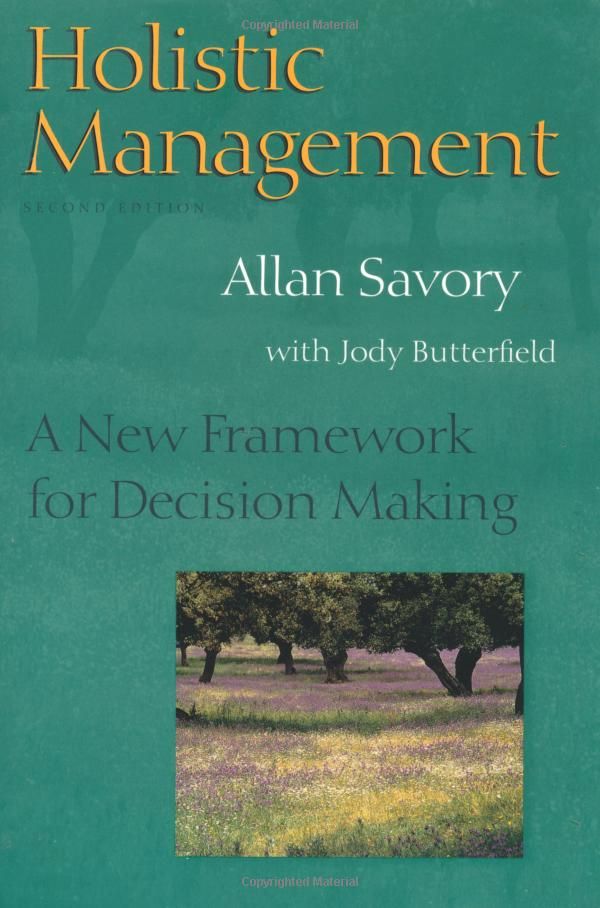
Holistic Planning made sense to
us. I think at the time we sat down each weekend as a family and
were in complete amazement at how it is what we had been looking
for. We consisted of two very nerdy farmer women who loved lists
and analysis and being pragmatically hardworking, a very
creative, nature loving, practical and philosophical dreamer who
didn’t really like farming and an already half worn son who was
all those other things but also wanted to be able to get up each
morning and make a difference to production and environment in a
meaningful way... a hard ask in drought. Coming out of that
course we knew ourselves a little more and were questioning
everything with a more solid state of mind and a forward plan.
Concepts like the seven holistic decision-making questions were
used on everything. Unlike other farm planning courses, we had
done way back when, it made us take out our heart and brain and
think with our souls on what we truly wanted for our lives and
the context in which we lived. Not just why we have chosen to
live but where we live and why. Deeper meanings being sought,
and it in turn relates to place and work and relationships.
Start with the bigger whole. This is you. The hard part came
when the brain and hearts were put back in. My holistic context
was simple. “I need
to live my life everyday with direct purpose and meaning. Caring
for and being cared for by loved ones, my community, my
environment and my planet”
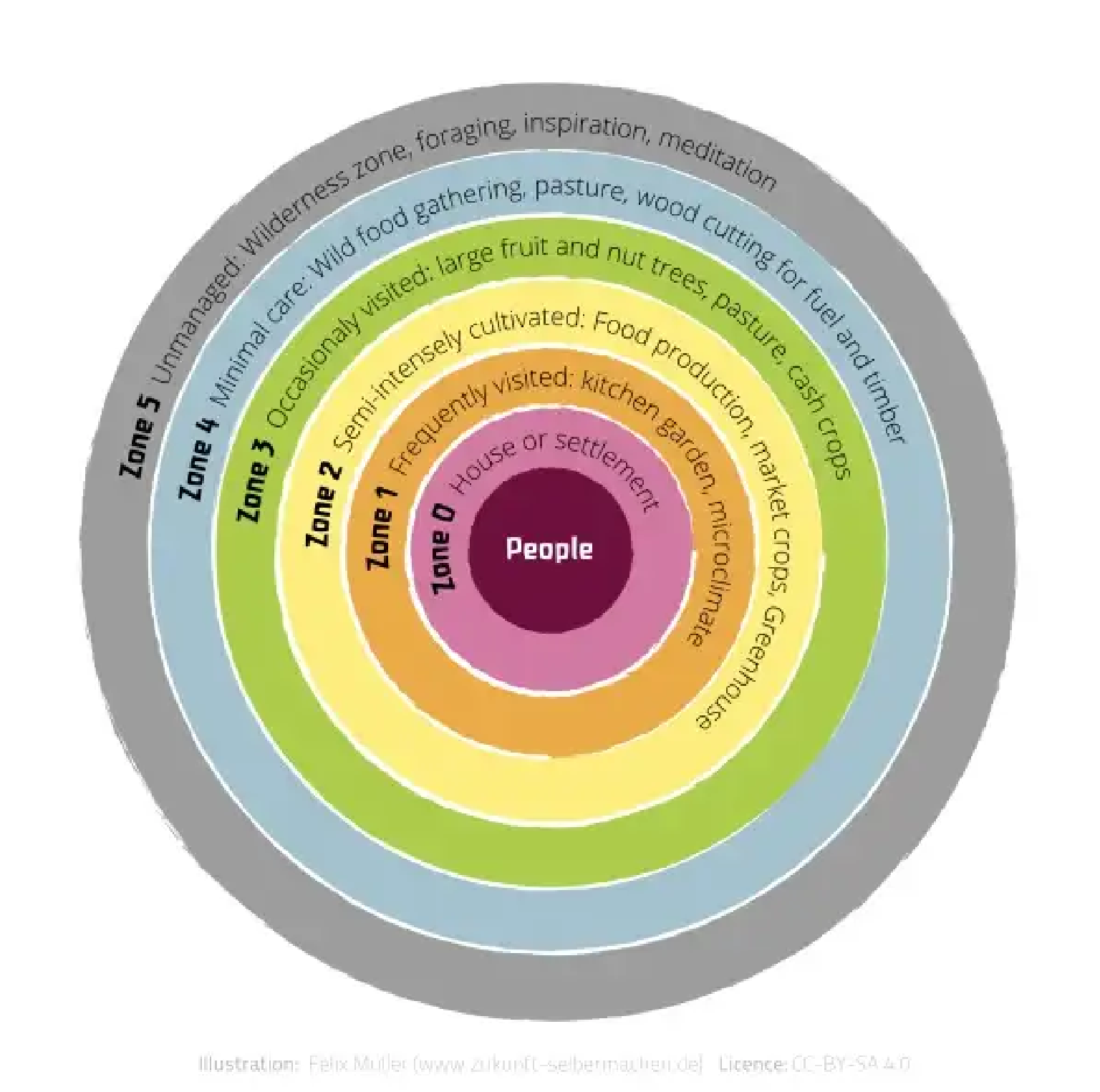 See this good resource: https://deepgreenpermaculture.com/permaculture/permaculture-design-principles/4-zones-and-sectors-efficient-energy-planning/
See this good resource: https://deepgreenpermaculture.com/permaculture/permaculture-design-principles/4-zones-and-sectors-efficient-energy-planning/
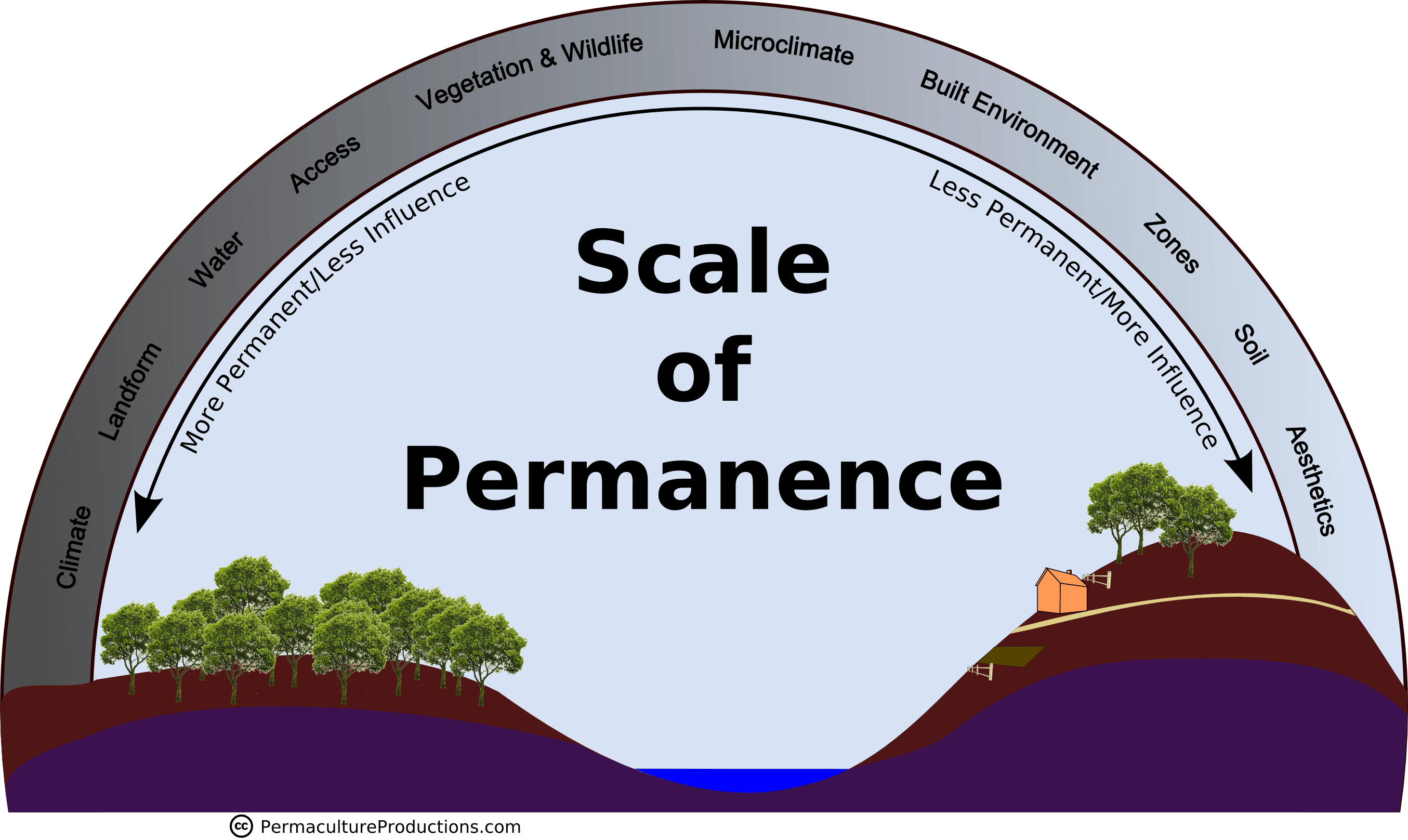
The first on this scale is climate. I am stuck with my
climate as I chose to live here. Our farm is a family farm
with history and many positive attributes that means we
wouldn’t choose elsewhere. You can’t change climate as an
element that is entering the site. You can mitigate its
affects and make use of it. We also must be highly adaptive
to the ever-changing seasons that will occur over the next
few decades. Our area is predicted to have more drought,
more intense rain events including storms and the jury is
still out on the winters. Could be warmer, most likely
colder and drier. Presently we can only observe that the
periods of time without rain are longer. Our spring is now
filled with heat waves and dry wind and our summer rain has
now been pushed back to late January at the earliest. Our
market garden site was chosen for the beautiful black soil
that is self-mulching and very fertile. It has a well fenced
2 acres away from wildlife and no terrain problems. Most
organic market gardeners would think it a blessing. That it
is, but what we sometimes see as the best options can have
other implications. Weather wise, the site is okay in summer
but without shade and very cold in the winter (minus 9
minimum for at least 3 nights a year). The worst winds come
from the west in winter and the north in a droughty spring.
The sun is becoming too intense for constant commercial
vegetable production in summer.
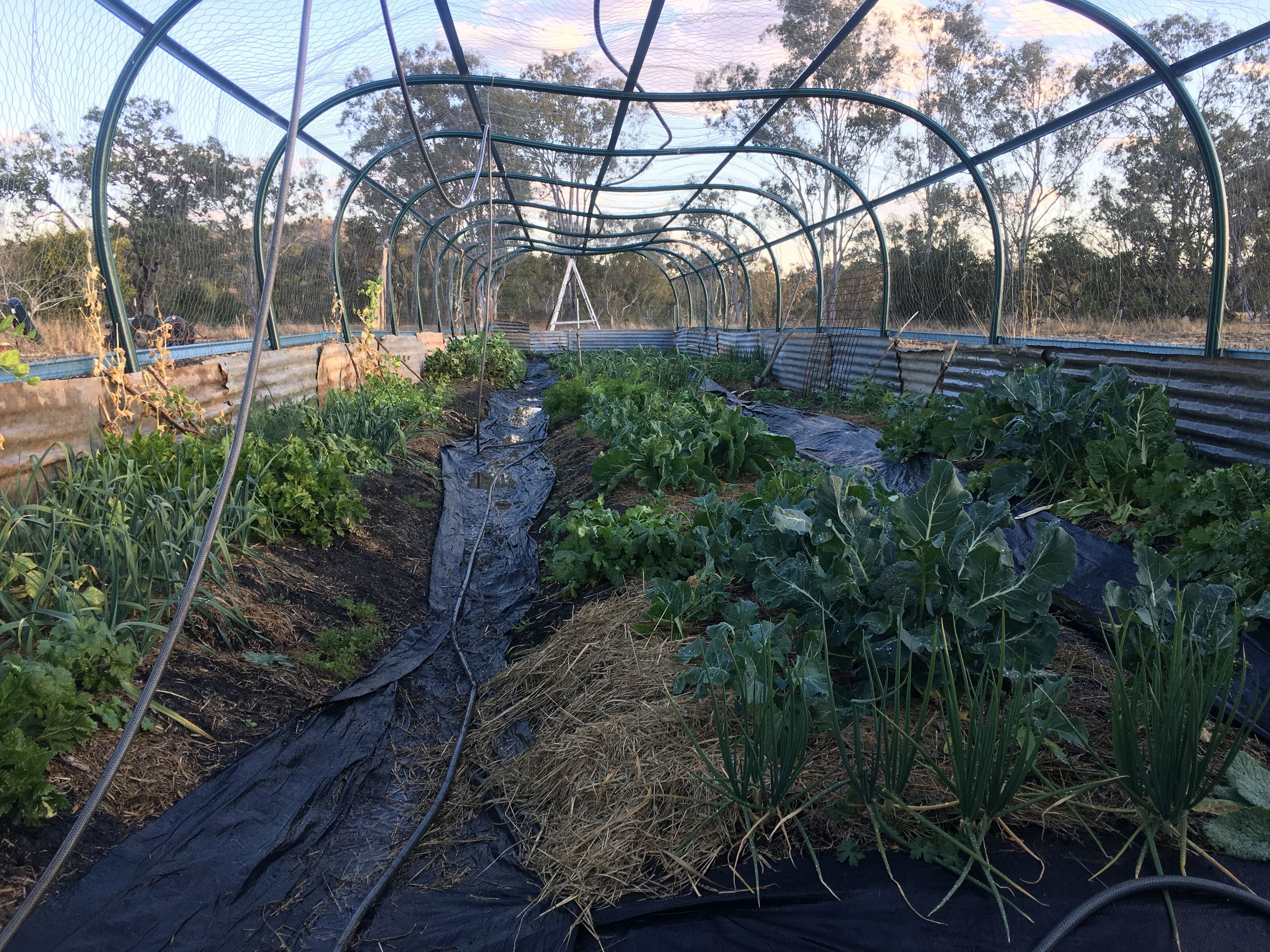 How have we ‘fixed’ these issues? Well, we put up hoop
houses made out mostly recycled materials and either
reusable or second-hand. Big tick. They are great for pests
and mitigating climate effects. We have five all up on the
property so far. At the market garden site, we have two. Our
priority is that they all pay for themselves in full cost
accounting before the next goes up but at the time of
writing we really need more. The last paid for itself within
two months in cost of production verses output but it was
made partially out of steel, so we always consider the
long-term environment effects of that decision to use a
non-renewable resource. We put up shade sails to counter the
wind and shade problems. That worked very well until the
hailstorm event of November 2020 that wore some down and
damaged others and the plants beneath. To be fair, it
wrecked the hoop house production, which was ramping up
production coming out of spring. We have experimented with a
whole array of plants. Despite the minus nine winters, sugar
cane is a stayer as is mugwort. Mugwort is very greedy and
has some invasive roots which are allopathic. I have tried
pigeon peas which are a subtropical favourite here but must
treat them as an annual. They provide a great shade and
legume mulch. Leucaena is a goer too but must be treated
again as a plant that will grow forth in spring and then
maybe gain enough ground in summer to endure the winter.
These plants protect, mulch and modify microclimates. At
time of writing, I am yet to try Tagasaste and Russian
Olives as hedgerow plants that can survive the winters and
be happy in the summers. My mind’s eye sees hedgerows of
shade and wind protection but unfortunately only a summer
reality at this stage. We have experimented with more
physical structures and have put up insect walls made of
wood that have helped. They have been a great experiment so
far in that we have lizards and solitary bees, spiders and
eggs of beneficial insects. This summer we plan to use more
recycled hail damaged shade cloth to create more shade/wind
breaker walls in our long beds. Landforms are also something
we can play with on a micro scale. It is next on the list of
top three things we need in place first in planning. They
are climate mitigators too. Protection and water gathering
for rainwater harvesting. Our place has lots of terrain and
some we can play with for water and fertility capture. Our
market garden site is on a fence line bordering our
neighbours where we share a flat valley floor which in an
ideal world would maybe not be demarcated by ownership or
fences. It is on about a one-degree slope downhill towards
our garden. We installed a swale to feed nutrient and water
into the second hoop house and to establish a line of
mulberries that will shade and drop very nutritious leaves
into the swale for extra downhill nutrition. Swales have
been very successful on other parts of the property
including the first hoop house we built which post rain
event requires only a light watering for even intensive
crops and the fertility is building year after year. Another
swale is being constructed for bamboo and more mulberries.
Micro swales have been included when planting a small
orchard on site too. We have also planned for the top of our
swale to have composting bins that will take any nutrient
run off to the lower part of the garden.
How have we ‘fixed’ these issues? Well, we put up hoop
houses made out mostly recycled materials and either
reusable or second-hand. Big tick. They are great for pests
and mitigating climate effects. We have five all up on the
property so far. At the market garden site, we have two. Our
priority is that they all pay for themselves in full cost
accounting before the next goes up but at the time of
writing we really need more. The last paid for itself within
two months in cost of production verses output but it was
made partially out of steel, so we always consider the
long-term environment effects of that decision to use a
non-renewable resource. We put up shade sails to counter the
wind and shade problems. That worked very well until the
hailstorm event of November 2020 that wore some down and
damaged others and the plants beneath. To be fair, it
wrecked the hoop house production, which was ramping up
production coming out of spring. We have experimented with a
whole array of plants. Despite the minus nine winters, sugar
cane is a stayer as is mugwort. Mugwort is very greedy and
has some invasive roots which are allopathic. I have tried
pigeon peas which are a subtropical favourite here but must
treat them as an annual. They provide a great shade and
legume mulch. Leucaena is a goer too but must be treated
again as a plant that will grow forth in spring and then
maybe gain enough ground in summer to endure the winter.
These plants protect, mulch and modify microclimates. At
time of writing, I am yet to try Tagasaste and Russian
Olives as hedgerow plants that can survive the winters and
be happy in the summers. My mind’s eye sees hedgerows of
shade and wind protection but unfortunately only a summer
reality at this stage. We have experimented with more
physical structures and have put up insect walls made of
wood that have helped. They have been a great experiment so
far in that we have lizards and solitary bees, spiders and
eggs of beneficial insects. This summer we plan to use more
recycled hail damaged shade cloth to create more shade/wind
breaker walls in our long beds. Landforms are also something
we can play with on a micro scale. It is next on the list of
top three things we need in place first in planning. They
are climate mitigators too. Protection and water gathering
for rainwater harvesting. Our place has lots of terrain and
some we can play with for water and fertility capture. Our
market garden site is on a fence line bordering our
neighbours where we share a flat valley floor which in an
ideal world would maybe not be demarcated by ownership or
fences. It is on about a one-degree slope downhill towards
our garden. We installed a swale to feed nutrient and water
into the second hoop house and to establish a line of
mulberries that will shade and drop very nutritious leaves
into the swale for extra downhill nutrition. Swales have
been very successful on other parts of the property
including the first hoop house we built which post rain
event requires only a light watering for even intensive
crops and the fertility is building year after year. Another
swale is being constructed for bamboo and more mulberries.
Micro swales have been included when planting a small
orchard on site too. We have also planned for the top of our
swale to have composting bins that will take any nutrient
run off to the lower part of the garden.
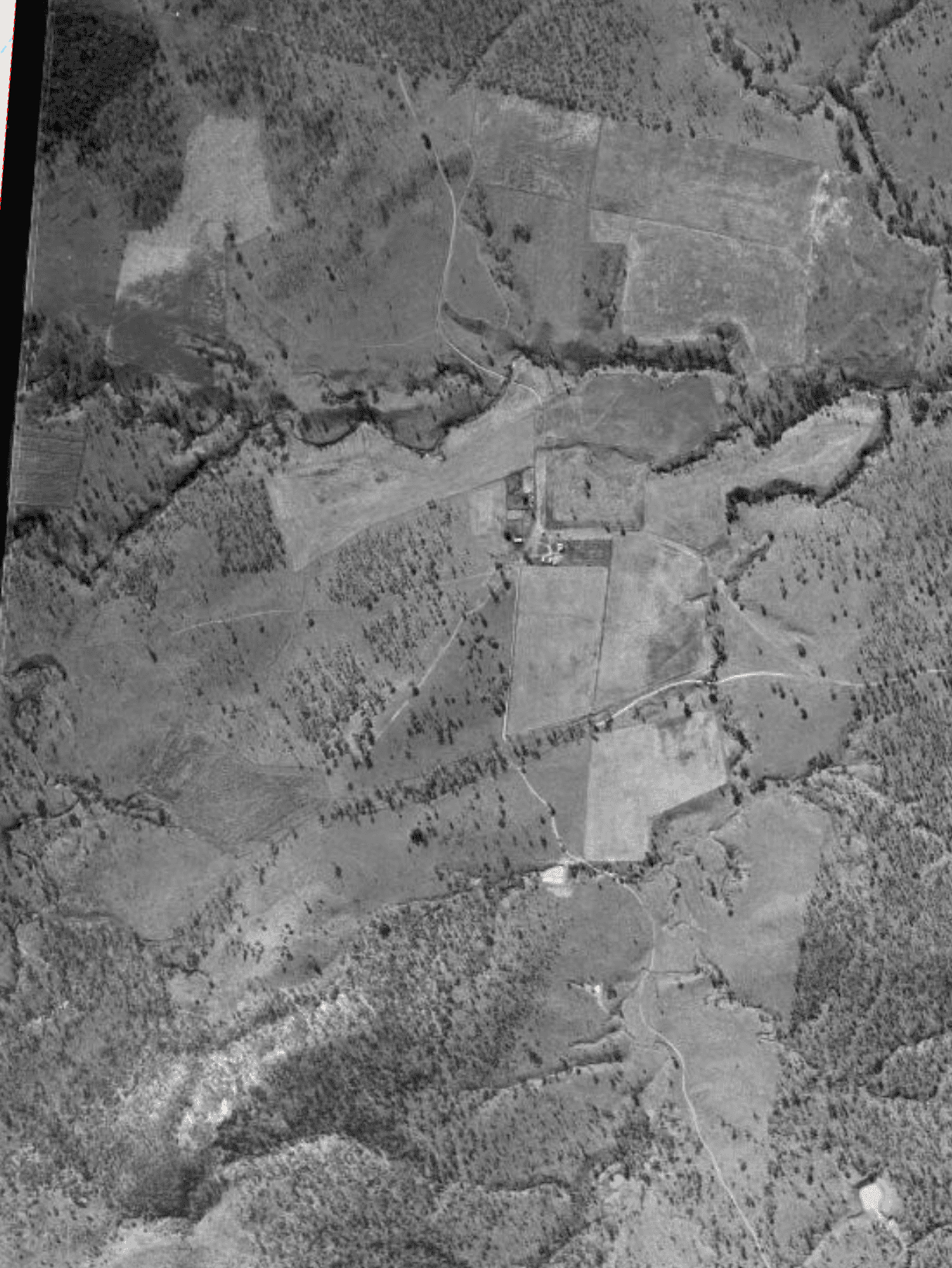
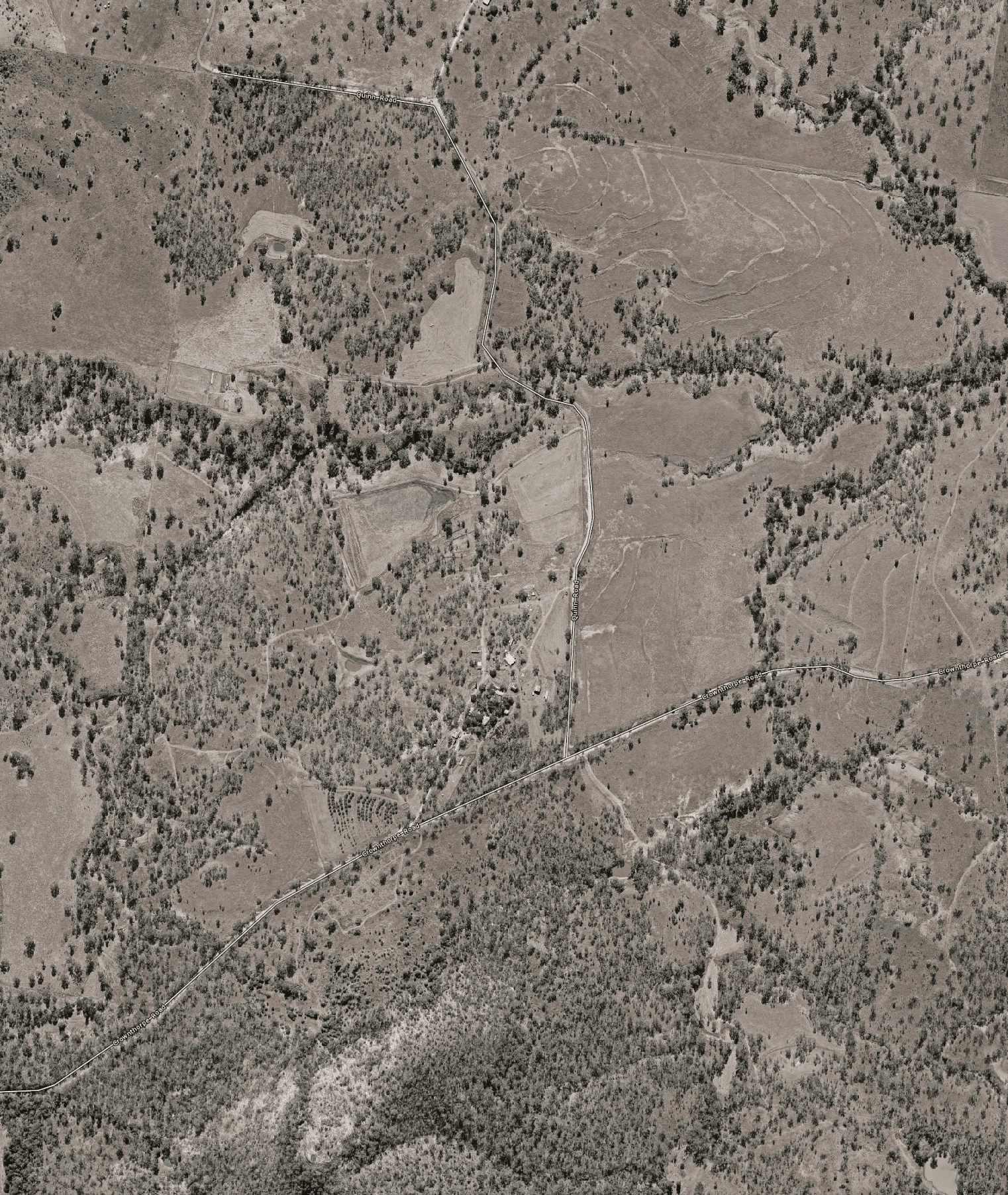 In these zones we are planting trees but moreover
essentially eliminating stock to allow natural growth. They
‘holiday’ there for only around 3 days a year. It is a
‘sweep’ in late summer or autumn for fire control and a
little disturbance which we have found benefits the plants.
Irrigation water for the garden is very minimal compared to
any other operation I know of. Due to water mineralization
problems and the need for conservation of moisture we only
water in the dark hours and at a push late afternoon. Most
is hand watering or spot watering to avoid build up in the
soil of magnesium and other minerals. About once a fortnight
some areas are watered overhead for a few hours in the night
to replenish the deeper soil moisture. We once used T Tape
and similar irrigation which seems to last only a few years
without problems. We have a very lofty ideal of trying to
eliminate plastic from our garden ventures and there are a
lot of plastic irrigation pieces. This past season we hooked
our water line into one of the many dams on the property. It
allowed us to see the fantastic results dam water can bring.
It also gave our soils a rest from the mineralization. An
installation of a 20,000 litre rain water tank and shed
(both second hand) should give us enough water for the
installation of up to 20 wicking beds to further secure our
water and climate control. The scale of permanence is a
constant revisit and feedback loop: Apply self-regulation
and accept feedback.
In these zones we are planting trees but moreover
essentially eliminating stock to allow natural growth. They
‘holiday’ there for only around 3 days a year. It is a
‘sweep’ in late summer or autumn for fire control and a
little disturbance which we have found benefits the plants.
Irrigation water for the garden is very minimal compared to
any other operation I know of. Due to water mineralization
problems and the need for conservation of moisture we only
water in the dark hours and at a push late afternoon. Most
is hand watering or spot watering to avoid build up in the
soil of magnesium and other minerals. About once a fortnight
some areas are watered overhead for a few hours in the night
to replenish the deeper soil moisture. We once used T Tape
and similar irrigation which seems to last only a few years
without problems. We have a very lofty ideal of trying to
eliminate plastic from our garden ventures and there are a
lot of plastic irrigation pieces. This past season we hooked
our water line into one of the many dams on the property. It
allowed us to see the fantastic results dam water can bring.
It also gave our soils a rest from the mineralization. An
installation of a 20,000 litre rain water tank and shed
(both second hand) should give us enough water for the
installation of up to 20 wicking beds to further secure our
water and climate control. The scale of permanence is a
constant revisit and feedback loop: Apply self-regulation
and accept feedback.
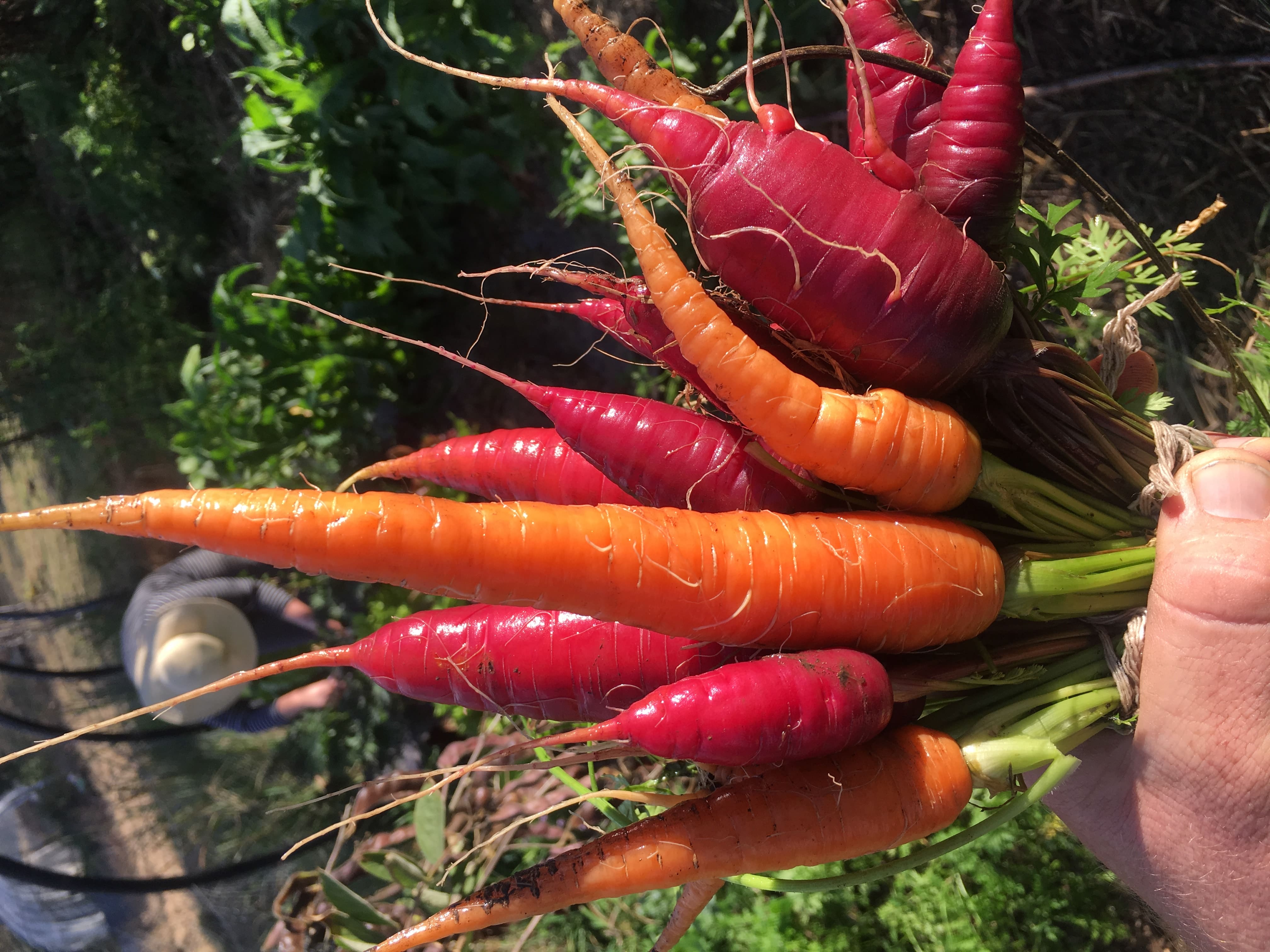
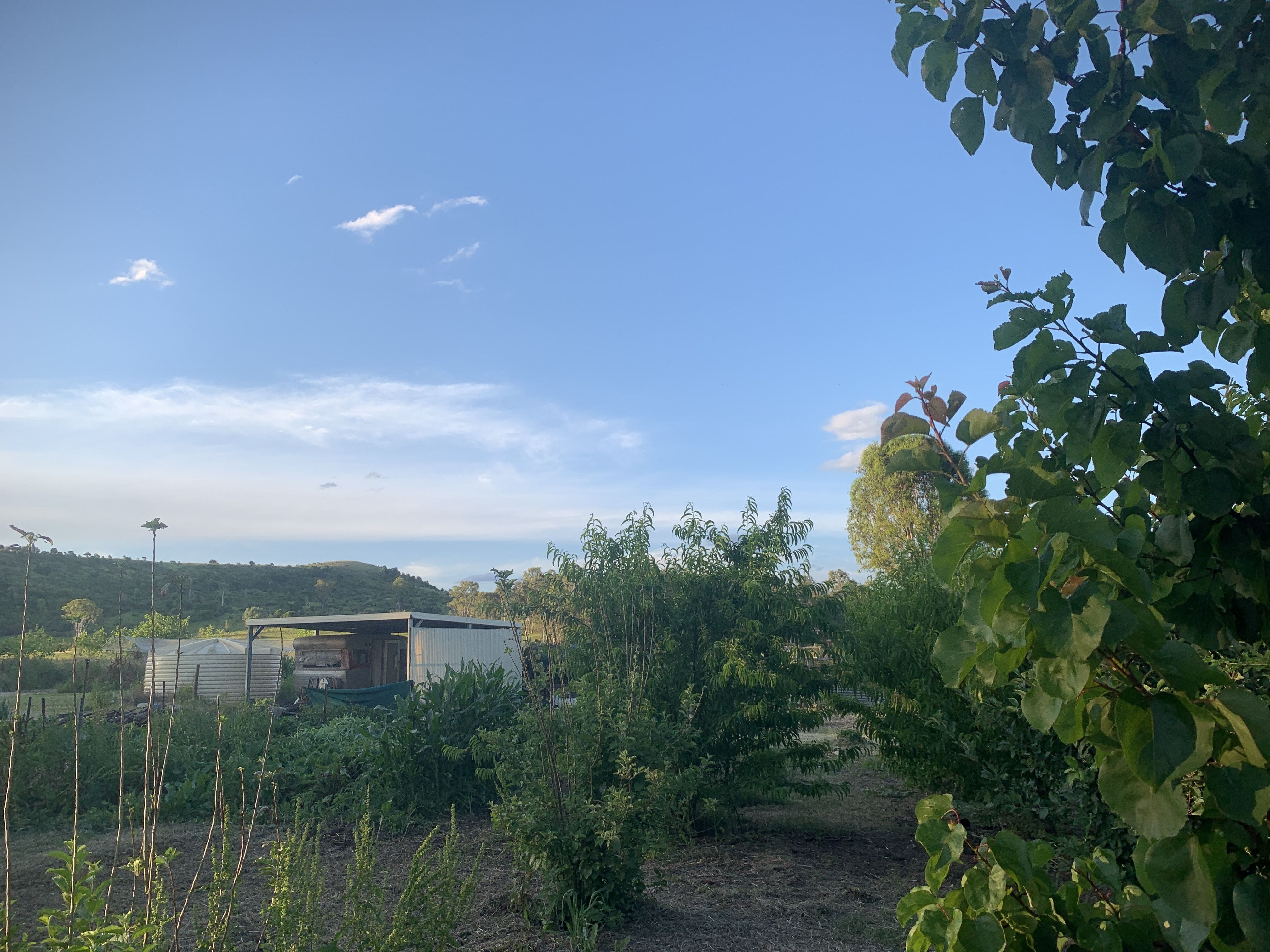 Looking back on the list in SOP soil fertility, management
(people) and aesthetics are elements that come and go within
a space. They do mostly depend on the people and the ways of
working. The most important asset to a farm is without a
doubt the soil. Without soil health function of everything
else ceases. High profile soil experts such as Nicole
Masters, Dr Elaine Ingram and Matt Powers all run the same
message that soil is number one. Questions could be directed
outwards. Why is it not at the top of the Scale of
Permanence? Well, it something you can change and nurture
and build in a relatively short period of time. The elements
at the top of the list can be worked with in the landscape,
for example, if you don’t consider placement and control of
your landscape changes or water building capacity for a
certain purpose the chances are building the soil and the
overall holistic health of the farm, including the people
are not going to go the distance. Going the distance is a
very high priority! In a year we have produced a whopping 7
tonne of veggies from our garden of under an acre. That’s
right: one acre out of 540. It has fed us veggies and up to
12 boxes per week to our community. Also, it has remade our
compost and been a large part of the diet of our pigs and
chickens. The demand is huge for good clean food grown in a
deliberate system that incorporates natural elements for
longevity for both people and environment. All the hurdles
that we face every day are slowly being overcome, so far
with minimal inputs, that mostly come from the repository of
the whole farm. The most important part though is the care
of not only the environment but the people in that system
and that why our slow and small solutions come to us in a
flow that can’t be rushed. The ideals we have followed
through on from our youth are beginning to pay off. That
nuggety man knew, and many brilliant collective minds know
it works and they are building a better world.
Looking back on the list in SOP soil fertility, management
(people) and aesthetics are elements that come and go within
a space. They do mostly depend on the people and the ways of
working. The most important asset to a farm is without a
doubt the soil. Without soil health function of everything
else ceases. High profile soil experts such as Nicole
Masters, Dr Elaine Ingram and Matt Powers all run the same
message that soil is number one. Questions could be directed
outwards. Why is it not at the top of the Scale of
Permanence? Well, it something you can change and nurture
and build in a relatively short period of time. The elements
at the top of the list can be worked with in the landscape,
for example, if you don’t consider placement and control of
your landscape changes or water building capacity for a
certain purpose the chances are building the soil and the
overall holistic health of the farm, including the people
are not going to go the distance. Going the distance is a
very high priority! In a year we have produced a whopping 7
tonne of veggies from our garden of under an acre. That’s
right: one acre out of 540. It has fed us veggies and up to
12 boxes per week to our community. Also, it has remade our
compost and been a large part of the diet of our pigs and
chickens. The demand is huge for good clean food grown in a
deliberate system that incorporates natural elements for
longevity for both people and environment. All the hurdles
that we face every day are slowly being overcome, so far
with minimal inputs, that mostly come from the repository of
the whole farm. The most important part though is the care
of not only the environment but the people in that system
and that why our slow and small solutions come to us in a
flow that can’t be rushed. The ideals we have followed
through on from our youth are beginning to pay off. That
nuggety man knew, and many brilliant collective minds know
it works and they are building a better world.
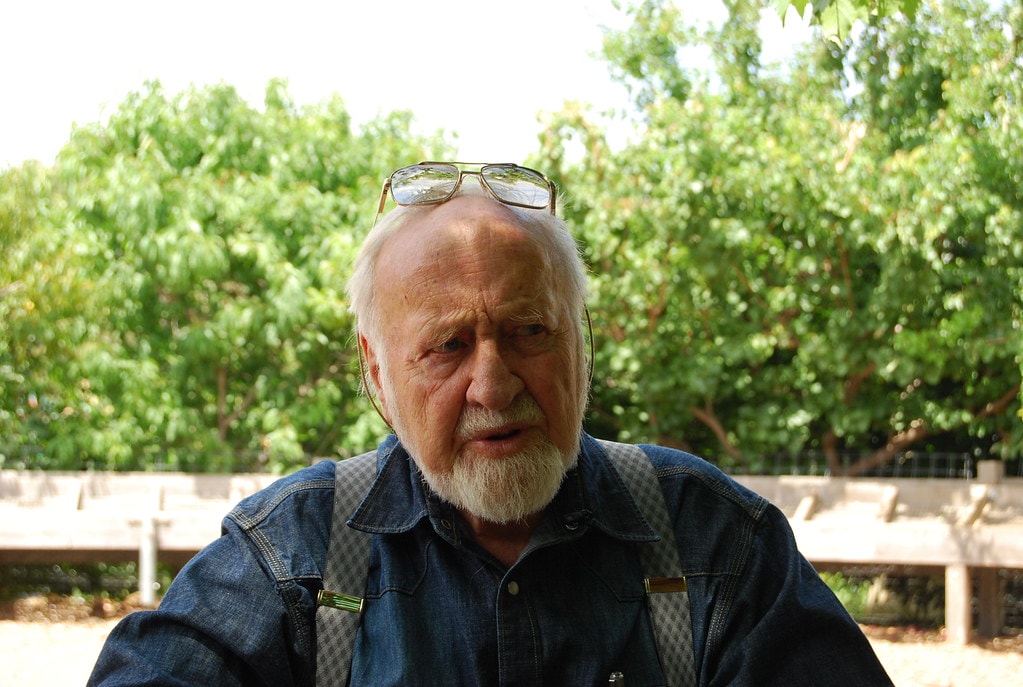
... sounds very vague and
generic but I suspect it won’t change throughout my life and
it has been my mantra since my childhood. I, also more
pragmatically, had the desire to concentrate on the elements
of not only my life but our business that would pull it all
together into a tighter knit. I had costed out a market garden
model during the HM course. If we could turn out an average of
30 plus organic but reasonably priced produce boxes into the
community each week, within five years we would be earning a
small income and feeling we are contributing to the health of
our families in the community. A good start. I had learned
from an extended time working with a community of young people
that they, more often than not had households without good
food and had parents who didn’t know how to cook.
Being a gardener since early
childhood (I think I was 3 when I was planting broad beans
with my father) and a permaculture practitioner since my late
teens I thought I had it all down pat. Observe the site, plan
the garden, dig the garden, plant the seeds and in the words
of Neil, my hero from the BBC series the Young Ones; “nature
will grow the seeds” and it does; somewhat. But this is not
Disney nor is it Instagram: it is dance and martial arts.
Spiritually i needed to ‘Obtain
a Yield’ which was needed for our family: for health and
vitality. During the 20 years of free-range pig
farming/marketing and the subsequent toils of a town job the
growth of veggies was small and spasmodic. Ironically in the
years we were delivering produce to Brisbane and Sunshine
Coast our food security went out the window. We were too busy
and too tired for consistency. And to make matters worse
around our Zone One, the possums had taken over, eating
whatever yield we were expecting. For those curious, a Zone
One in a permacultural system design is where you can reach
out your back door and go pick a plenty and you can tend in
detail in your PJ’s if necessary.
 See this good resource: https://deepgreenpermaculture.com/permaculture/permaculture-design-principles/4-zones-and-sectors-efficient-energy-planning/
See this good resource: https://deepgreenpermaculture.com/permaculture/permaculture-design-principles/4-zones-and-sectors-efficient-energy-planning/
During our
time with Brisbane deliveries we supplied a few small shops
and co-ops. We grew organically certified market garden
crops that pigs could eat any gluts we had. Most famously
snow peas and rocket which during times of no delivery we
would feed to pigs who relished them. Pumpkin, sweet potato
and zucchini in summer. Limited specific crops. We did do
produce boxes for over a year in that time. This was when it
was still foreign to locals and customers and the boxes were
limited to a few local teachers and artists who had
understood the concept of a mixed box. It is difficult for
the buyer. You don’t know really what you are getting each
week. It doesn’t cater for those people who don’t like to
cook as it necessitates that one must be inventive with meal
planning. What it does do is call for you to be engaged with
your food and seasonality and as Michael Pollen says in In
Defence of Food “eat food; not too much; mostly plants” So
this became my cunning plan: make them cook! Also, from the
farmers perspective wasting the good food that they produce
for no other reason than to cater to recipe whims is
heartbreaking. The food waste, apart from its appalling
total energy loss to the system, seems to be an expected
part of any food production system. Our veggie boxes didn’t
allow for the mass throw-out of unwanted veggies that is
prevalent in many market gardens. The ugly veggies are put
into the boxes as extras. Any other clean veggie waste feeds
our pigs and cows, but mainly ends up in our compost to
direct feed our veggies. Our systems have always endeavoured
to be a tight closed loop with as many inputs as possible
coming from the farm. The Holmgren principle: ‘Produce no
Waste’ is more than just recycling and feeding the waste to
worm farms. It is integral and intrinsically married to the
ecosystems of a farm. We can’t keep taking without putting
energy back into that system. Food is energy and food for
one, is food for another. Our compost is made from the weeds
and grass that are slashed from the paddocks and when
applicable green waste that we shed when packing veggies for
customers. Manure tea is sometimes made with cow manure and
chicken manure (and weeds) fermented in a 1000 litre tote
and aged for safety. This year we had to bring in some
piggery waste as aged compost to use in our compost and on
our beds to boost our nitrogen and phosphorus content.
Included with this compost we were able to see the breakdown
chart, so we were relatively happy with its safety. It was
relatively cheap and clean and taken from intensive weaner
pig pens. Our pigs have never been able to give us a
quantity of manure for the garden as they are free range and
with a healthy quantity of dung beetles, we couldn’t collect
it if we tried except maybe nappies on each pig? Intensive
piggeries are pig gaols of horror proportions. But we figure
us taking a very small amount of their waste and putting it
to good use isn’t going to support that system. When we
started, we started with what we knew. Holmgren permaculture
principles nibbling at the edge of the brain and heart; we
began planning. I was very lucky to be introduced to PA
Yeomans very early on. He explored the idea that you need to
put things in an order of consideration when planning
sustainable land use. Some things cannot be changed, or if
they can, they would cost far too much money to ever be
changed. This is particularly obvious in planning out a
farm. We had little to no capital, like most farmers. As of
writing, the average wage income of an Australian farmer is
around $32,000, so not a lot to throw around. Dave Jacke, an
American permaculturalist adapted from Yeomans, the “Scale
of Permanence” concept (among other great ideas), which
consists of working with the things that can’t be changed
first and incorporating everything else in degrees from the
hardest to the easiest to change. It isn’t a check list that
says you must get this one perfect before the next. It is a
process to consider, understanding that you are imposing
something on a landscape. The more you can work with the
elements that are already there, the better your system will
potentially function with less inputs for the desired
result. Designing from patterns to details.

The South Burnett area like
many Australian landscapes that are tired through massive
clearing and intensive farming practices has a scarcity of
good water. Our creek water is ‘salty’. Filled with an
overload of calcium carbonate that has leached to the
surface. A 1950’s aerial photo of our farm shows bare
paddocks, substantial cultivation and moreover a bare
over-grazed creek system. These days our riparian zone is
very protected and has been most of the 30 years we have
been here; increasing by degrees.


We have studied many market
gardeners all over the world who have made some of the
mistakes. Their resilience and ability to use this principle
is very admirable. Most helpful has been a Canadian guy
called Jean Martin Fortier who has a book called ‘The Market
Garden’ available as a very worthwhile audiobook as we read
it while working in the market garden. He has the outlook of
a permaculturist coupled with pragmatism. He taught us about
lots of things but in particular the use of proper access in
the bed system of gardening. His thoughts and experience are
coming from the ideas put across in Christopher Alexander’s
‘Pattern Language’ a permaculture classic regarding creation
of spaces to provide natural flow for human navigation.
Thinking about how you move and to what purpose, can be
built into the design and can mean the difference between
being happy and being so sore and fatigued that you don’t
want to garden the next day. We deliberately (until this
current season) have been very reluctant to make long beds
remembering the long days of walking up and down rows.
There are other ways. We
feel we need to mix crops in together to give extra measures
surrounding pest control, but flow and function is a bit of
a hassle when trying to get enough access to functional
space. Planning production for the veggie box week, etc is
tricky and dancing around this planning can be hard. Access
and circulation in the system is always being fine-tuned.
The larger lane ways and access points for water and
vehicles are designed to be a constant and can’t be changed
and are therefore high on the scale of permanence. Human and
animal walkways can be given a little more leeway. Access to
our compost bays to bring in mulch, tractor access and
access to the shed for construction. These elements must be
permanent within the scope of the project. Vegetation and
wildlife movement are highly active near our market garden.
The main creek and surrounding riparian wilderness zone,
where we promote ecological movement, borders two sides.
This is on our neat quadrant of threats and opportunities
(know the square?) A preparation for battle is always on our
minds and in our work program. The fence surrounding the
garden is strong. The electric fence power is stronger. The
next battlement of a floppy top and bottom added to the
fence and a construction of a full chicken run surrounding
the garden is next on our list of priorities. All mitigation
techniques. Chickens have proven their worth in the garden
area... not the garden itself... the odd renegade is feather
clipped and returned after the usual bout of swearing from
us. When a plague of grasshoppers came in last year, we
fortified the outside with over 40 chickens and over a week
or so, most were gone. They were young point of lays mostly
and smaller chickens, so they learned what great veggies
taste like and are still very excited to seek out grubs and
eat anything. Most animals here have many functions.
Chickens are secured around buildings to seek out white ant
trails, taken to treed areas to fertilise and push down
grass. Where bush land needs fertility and a little
kickstart chickens are introduced for a very short time to
exhibit their natural behaviours and eat insects and larvae.
They follow cows and pigs sometimes to rake over areas where
cows may have dropped ticks and larvae of worms etc. The
importance of timing these events is about observation and
education of the lifecycle of micro fauna and flora. In our
brittle environment a wrong animal in a space can set back
an ecosystem for a considerable period. Gentle watching and
gentle treading.
